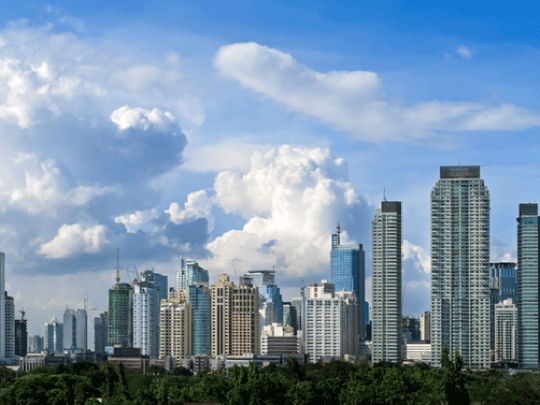
- More money coming in from abroad, highlighting foreign investors' growing interest in emerging markets and the Philippines
- Foreign investors have already pumped in more than $75 million in equity funds this year
- Analysts forecast that profit growth will speed up to more than 12 per cent this year compared with about 8.5 per cent
Manila: Philippine bulls are on a roll, and who can blame them? The nation’s equities index has started the year beating many global peers, and foreign fund managers are putting back money in a market that was among Asia’s worst in 2018.
Traders at Rizal Commercial Banking Corp and AB Capital & Investment Corp are riding the rally by deploying their cash, rather than cutting their stock holdings as they did last year whenever equities went into high gear.
The Philippine Stock Exchange Index has rallied more than 6 per cent in the first trading days of January, including a 2.8 per cent gain Wednesday. It closed at an eight-month high, breaking a key resistance level and moving closer to the 8,000 that traders say it could surpass this quarter.
“It’s a good strategy to ride the prevailing positive mood, even if only for the short term,” said Gerard Abad, who manages $380 million (Dh1.4 billion) as chief investment officer at AB Capital.
“We will see a continuation of the improvement in inflation, and it helps that the US Fed has become dovish. That eases pressure on the central bank to raise rates.”
The optimism stems from encouraging inflation data — it slowed for a second month from a nine-year high, reaching its slowest pace since May — and prospects that the Federal Reserve will ease interest-rate increases.
That’s brought down the US dollar from a high, prompting foreign investors to come back to the Philippines: They’ve already pumped in more than $75 million in equity funds this year, including the longest streak of daily inflows in five months, after $1.08 billion of withdrawals in 2018.
Bullish sentiment
“Sentiments are very bullish,” said Rizal Bank trader Steven Ko, who helps manage about $1.72 billion. “We are taking profit in some of the leaders, but rotate the money into stocks that will outperform as the climb to the 8,100 to 8,200 level is quite possible from here.”
Nomura analysts Chetan Seth and Jayant Parasramka upgraded Philippine equities to overweight from neutral in a note published Wednesday, citing a peak in the nation’s inflation. Stock valuations can be justified by strong earnings growth prospects, they said.
Ko is looking for market laggards, with a preference for banks and consumer-related shares on expectations margins will improve and earnings will grow. Abad, who in addition to those sectors likes property, is withdrawing from mid-cap stocks and putting the money into the market’s biggest companies, which he expects will propel the nation’s benchmark index higher.
Yet, he recommends to “cut exposure” should the Philippine equity index break the 8,200 to 8,300 level, which he sees as likely. With the prevailing bullish sentiment, and should fourth-quarter gross domestic product data show a pick up in growth, the gauge could even hit 8,400, he said.
“It won’t hurt to be conservative and top slice if the market rallies too fast, too soon,” Abad said. “It’s better to wait for first-quarter earnings for confirmation of whether this rally is standing on fundamental legs.”
Slowing inflation may boost spending and margins, which could trigger a corporate-earnings surprise and drive the Philippine stock index to 8,900 this year, according to Jody Santiago, a strategist at UBS Group AG in Manila.
He forecasts profit growth to speed up to more than 12 per cent this year compared with about 8.5 per cent in 2018, when rising inflation squeezed margins and hurt consumer demand.
Optimism for earnings growth is renewing interest from overseas investors and helping support valuations, Ko said. That’s even though, at 16 times projected profit for the next year, they remain among the highest in Asia.
“It’s too early to say if the foreign-fund inflow is a reversal of last year’s withdrawals, but definitely there is some interest in emerging markets and the Philippines,” Ko said.












